Conditions Treated
Partial listing of conditions treated
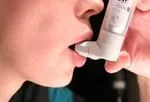
Numerous studies have shown Chiropractic care to help patients with asthma. A recent study performed in Australia on patients with allergy induced asthma has shown Chiropractic Manipulation of the neck to decrease the levels of Cortisol in the blood, while increasing the levels of Immunoglobulin A (IgA). Cortisol is an immune suppressor, while IgA boosts your body’s ability to fight allergic reactions.
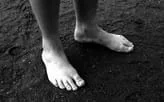
Ankle sprains occur most commonly when you forcefully turn your foot inward, over stretching the muscles and ligaments on the outside of your foot. This injury causes ankle pain, swelling, and discoloration of the injured area.
Early treatment of ankle sprains is critical in accelerating the healing process. In many instances, a bone in your ankle called the “talus” becomes misaligned. Left undetected, the healing time is typically doubled, because the misalignment causes instability, which typically leads to frequent aggravation of the ankle.
Additionally, Physiotherapy treatments such as ultrasound and electric muscle stimulation can quickly reduce swelling and promote quicker healing.

Arthritis
Arthritis is classified into two different types: Inflammatory Arthritis and Degenerative Arthritis.
Inflammatory Arthritis includes autoimmune conditions such as Rheumatoid Arthritis, Gout, and Systemic Lupus Erythematosis. Accurate diagnosis of these conditions is essential and typically involves x-rays and blood work. Conservative management of these conditions includes Chiropractic Manipulation, Massage and Myofascial Release Therapy, nutritional considerations, exercise therapy and rehab, and physiotherapy treatments maintain range of movement, reduce pain, and improve function.
Degenerative Arthritis
The most common form of arthritis, degenerative, or osteoarthritis occurs as a result of repetitive use over time, history of trauma, or abnormal use. Just as your tires wear out more quickly when your car is out of alignment, your spine is more prone to degeneration over time if not aligned or moving properly. Chiropractic care can help you to achieve and maintain proper spinal alignment to help prevent degenerative arthritis from occurring in your spine.
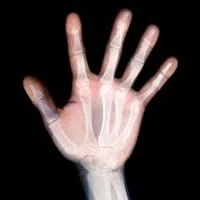
Carpal Tunnel Syndrome (CTS) is a condition in which the median nerve in the arm gets “pinched” at the wrist, causing pain, numbness, tingling, and weakness in the thumb side of the hand. CTS is typically caused by repetitive use of the hand and wrist over time, such as with computer or mouse work. Ergonomics also play a role in the cause and prevention of this condition.
Proper diagnosis of CTS is extremely important, as there are several locations in the body, the median nerve can be pinched besides the wrist, and failure to locate the location of the nerve compression results in unsuccessful treatment. Chiropractic Manipulation, myofascial release, Physiotherapy treatments, exercise rehabiliation, and ergonomic assessments, are all part of the treatment protocol in treating median nerve compression injuries.
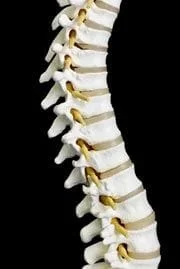
Many people turn to chiropractic care for safe, effective treatment of disc injuries. Injured discs are sometimes referred to as a “slipped” discs, but discs don’t actually slip out of place. Discs can, however, bulge or herniate, causing pain at the site of injury, and/or numbness, pain, tingling, and weakness to radiate down the arms or legs.
The pain and other symptoms are caused by the disc putting pressure on the spinal nerves, causing a “pinched nerve”, which leads to inflammation, pain, and impaired function. Pressure on these “pinched nerves” can cause your symptoms to travel away from the spine, along the course of the affected nerve. The nerves of the neck travel down the shoulder and extend into the arm, hand, and fingers. This is why so many neck problems cause symptoms into the arm and hand. The nerves of the low back join to form the sciatic nerve, which travels down the leg into the foot. This is why a “pinched nerve” of the low back with symptoms radiating down the leg is often called “sciatica”.
Discs can be injured by an acute trauma, or can be injured slowly over time by poor posture, lifting incorrectly, and loss of normal spinal function (joint restrictions, misalignments, subluxations). Whatever the cause, disc injuries usually respond very well to chiropractic care. Before treatment begins, a thorough examination including orthopedic and neurologic testing and X-ray or MRI studies, if necessary, will help to determine your exact diagnosis and individualized treatment plan. Chiropractic Manipulation of the spinal and extremity joints is very effective in restoring normal position and function to the joints, as well as to the surrounding muscles and nerves. This usually leads to a decrease in pain and faster recovery. Part of your treatment may also include some of the following: Cervical or Lumbar Traction, Therapeutic Massage and Myofascial Release, Electric Muscle Stimulation and Ultrasound, and Exercise Rehabilitation. Also, the doctor may arrange for on-site evaluation of your workout routine and/or workplace to correct improper ergonomic conditions, which may be aggravating your condition.
If you are experiencing the symptoms of disc injury or “pinched nerve”, we recommend that you schedule an appointment as quickly as possible. In the event that your condition requires medical attention, an appropriate referral would be made promptly. However, surgery is rarely needed and should only be considered if conservative therapy fails.
Fibromyalgia
Fibromyalgia is a very complex and largely misunderstood condition. Because the cause of this condition is not truly understood, treatment of this condition may be limited to management of the symptoms associated with fibromyalgia.
Chiropractic Care, Exercise Rehabilitation, and Massage Therapy are very effective at reducing symptoms associated with this condition.
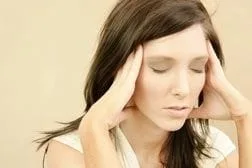
More than 15 million Americans suffer from persistent recurring headaches with no obvious cause. Pain medications often provide temporary relief but fall short of treating the root cause of the headache. Numerous studies have found that chiropractic care helps in the treatment of a variety of different types of headaches. Tension headaches, probably among the most common of these, have been found in recent studies to originate in the neck. A recently published controlled trial concluded, Chiropractic Manipulation has a significant positive effect in cases of cervicogenic (originating from the neck) headache." The study found that chiropractic care reduced the number of headache hours by an impressive 69% and reduced the intensity of the remaining headaches.
Migraine headaches, perhaps the most severe headaches, also respond to chiropractic care. In one study, 74.7% of migraine patients were greatly improved under chiropractic care, and the success rate was maintained two years after the care ended.
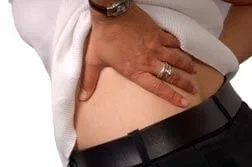
80% of Americans will suffer from lower back pain at some point in their lives. 1 in 3 has back pain all the time. These statistics suggest that our backs likely weren’t designed for all the things we do with them or to them. Treatment of lower back pain in either the acute or chronic stages, involves precise identification of misalignments or fixated vertebrae. Chiropractic care has been shown in every major study to be effective at reducing lower back pain and improving function. Identification of weak or tight muscles acting upon the spine which often make the back more vulnerable to injury, allows us to prescribe specific exercises to help you heal faster and stay better longer.
Additionally, careful identification of aggravating factors such as work ergonomics, posture, and exercise regimen can help us prevent you from becoming another statistic.

Many people turn to chiropractic care for safe, effective treatment of low back pain with leg pain, numbness, and tingling. While this is sometimes called "sciatica" or a "pinched nerve," there are actually many causes of these symptoms. Common causes include "trigger points" in various muscles, and irritated nerves from stiff and restricted joints and muscles. While a "pinched nerve" usually responds very well to chiropractic care, it is actually a relatively rare condition. In true cases of pinched nerve, you will feel tingling, numbness, and possibly even weakness due to pressure and inflammation on a nerve from bulging discs or bone spurs along the spine. Pressure on these "pinched nerves" can cause your symptoms to travel away from the spine, along the course of the nerve. The nerves of the low back join to form the sciatic nerve, which travels down the leg into the foot. This is why a "pinched nerve" of the low back with symptoms radiating down the leg is often called "sciatica."
A thorough examination including orthopedic and neurologic testing and X-ray or MRI studies, if necessary, will help to determine your exact diagnosis and individualized treatment plan. Manipulation (adjustment) of the spinal and extremity joints is very effective in restoring normal function to the joints, as well as to the surrounding muscles and nerves. This usually leads to a decrease in pain and faster recovery. Part of your treatment may also include some combination of the following: Physiotherapy such as Ultrasound and Electric Muscle Stimulation, Massage Therapy, and Exercise Rehabilitation.
If you are experiencing the symptoms of "pinched nerve" described above, we recommend that you schedule an appointment as quickly as possible. In the event that your condition requires medical attention, an appropriate referral would be made promptly. However, surgery is rarely needed and should only be considered if conservative therapy fails.
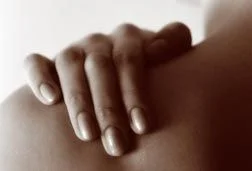
Car accidents and personal injury accidents can be a source of stress and pain for many of those that are involved. You are hurt, your car is damaged, others are involved, and the insurance companies just will not leave you alone with non-stop phone calls. Many patients that we have had in the past have gone to the Emergency Room or Urgent Care with little relief, they are usually given prescription pain medication, anti-inflammatories, and/or muscle relaxers that offer temporary relief and patient released still feeling pain, unable to sleep and work effectively, let alone side effects of those medications. Some patients have constant pain that lasts for several months. These symptoms are real, and these symptoms are what we see at our practice. The most common symptoms we see include neck pain, stiffness, decrease range of motion, headaches, nausea, tingling and numbness in the arms/hands/fingers, low back pain, upper back, shoulder pain, radiating pain, stress, inability to sleep, anxiety, being irritable with others, among others. If you have been injured in a car accident, do not settle for subpar treatment; come see us for a proper evaluation and examination.
Car accidents, blows to the back in sports, and on-the-job injuries can easily leave you with a whiplash injury. While symptoms are often felt immediately, pain may be delayed for days, months, or, in rare cases, even years. In fact, many people wake up with neck pain without being aware of ever having a head or neck injury. The most common symptom of whiplash (affecting 62% to 92% of those injured) is neck pain, and it usually begins between two hours and two days after the accident. This is often the result of tightened muscles that react to either muscle tears or excessive movement of joints from ligament damage. The muscles tighten in an effort to splint up and support the head, limiting the excessive movement. While muscle relaxants and pain killers can relieve some of the discomfort of these muscle spasms, these medications will only cover up symptoms, failing to address the cause of the problem.
An estimated 66% to 70% of those suffering from whiplash complain of headaches. The pain may be on one side or both, intermittent or constant, in one location or more diffuse. These headaches, like neck pain, are often the result of tightened, tensed muscles trying to keep the head stable and, like tension headaches, they are often felt behind the eyes.
Shoulder pain, often described as pain radiating down the back of the neck into the shoulder blade area, also may be the result of tensed muscles. Muscle tears often are described as burning, prickling or tingling pain. More severe disc damage may cause sharp pain with certain movements which are relieved by holding your hand over your head.
If you experience any of these symptoms, you may have a whiplash injury that, if left untreated, can cause far more serious problems months or years later. Everyone knows someone who got in a car accident and has never been the same since.

When a patient comes in our office presenting with pain from a personal injury or car accident we start by:
- First Examination: this is crucial to your treatment and our care. Examinations typically lasts 60 minutes and include making the patient feel comfortable, requesting other providers medical records to see what has worked/what has not/and what has been done, chiropractic/orthopedic/neurological/muscle testing, and getting a complete history of how the accident happened (where patient was sitting in car, rear ended, head rotated, etc.). All these are crucial in your treatment and getting you better.
- As stated in the phases of treatment on our website, we go through an intensive care phase which helps to decrease the inflammation in the acute/sub-acute phase, followed by a rehabilitation phase with more stretches and exercises to rehabilitate the injured soft tissues. Remember, if soft tissue structures are injured and you do not properly rehabilitate the soft tissue, it can lead to weakness, atrophy, and in many cases, chronic pain and discomfort down the road.
- Throughout your care with us, you will be closely monitored. We will ask you how you are doing on every visit and you will personally see the doctor on every visit for treatment. We also have a trained staff of exercise physiotherapist, stretch therapist, and massage therapist to assist in our care.
- Referrals to Specialists or Additional Diagnostic Imaging: If needed, we may take x-rays or refer for MRI as further diagnostic tools to better visualize damaged structures. We also work with trusted pain management specialist, orthopedic surgeons, neurologist, and primary care physicians and will refer to them if needed in your care.
If you have been injured in a personal injury and car accident, do not hesitate to make an appointment to see Drs. Carter, Hays, or Huynh.
The Quebec Automobile Insurance Society recently released an exhaustive study of more than 10,382 articles on neck injuries and concluded most interventions for whiplash injury were proven, including soft cervical collars and corticosteroid injections. Yet they recommended Chiropractic Manipulation as being clearly effective. If you suspect you have a whiplash injury, and/or have been involved in an automobile accident, or if you are having neck pain for some other reason, we can help you to feel better quickly, along with assisting you in the correction, rehabilitation and strengthening of your spine for prevention of future neck problems.

Mid back pain is often described as "burning" in nature. The pain can also be dull or sharp, intermittent or constant. Some common causes include: scoliosis, poor posture, repetitive movements, misalignment of the vertebrae and/or ribs, and strained muscles. A thorough examination will differentiate between these causes, and appropriate treatment will be rendered. Mid back pain responds well to chiropractic care, consisting of Manipulation, stretching and postural exercises, Physiotherapy Treatments, and Massage. Muscle imbalances can be found in the mid back, and a proper exercise program that targets the appropriate muscles is very helpful in relieving symptoms and preventing reinjury. Ergonomic assessment can also help to identify potential contributing factors.

In a society where more and more time is being spent at a desk, staring at a computer, neck pain is becoming more and more common. Hours of sitting often lead to poor posture, increasing the mechanical stress on the neck and shoulders. This mechanical stress is often compounded by emotional stress, which typically manifests in the neck and shoulder region, resulting in neck and upper back pain. Gone untreated, and these symptoms can ultimately cause headaches, numbness, tingling, pain, and weakness in the shoulders and arms, loss of mobility in the neck, and ultimately long term degenerative disc and joint disease.
Chiropractic care can restore proper alignment in the neck, improve posture, restore mobility, and reduce muscle tension in the neck and shoulders. Treatment is often combined with postural exercises, massage, physiotherapy treatments, and ergonomic assessments, to maximize your benefits as quickly as possible, and prevent future problems from occurring.
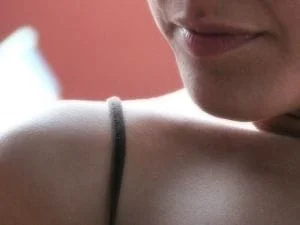
The shoulder joint is a very complex joint. In order to be healthy and working properly, the many muscles that control, move and stabilize the shoulder must have the proper balance of strength and flexibility. Repetitive activities we perform often create muscle imbalances that can compromise the normal function of the shoulder, often resulting in rotator cuff injuries.
Identification of these muscle imbalances is the first step in correcting rotator cuff injuries. Thorough evaluation of the shoulder and upper back is necessary, along with identification of the possible source of the muscle imbalances- posture, exercise program, trauma, etc... Treatment is specific to these findings and often includes Chiropractic Manipulation, Therapeutic exercises, Myofascial Release Techniques, and Physiotherapy Treatments.

The most common sources of hip pain are the muscles surrounding the hip, however, in some cases the hip joint itself can be a source of pain. Treatment of hip pain starts with identification of the muscle or group of muscles involved, along with assessment of the joint to determine if there are mobility problems. Sometimes x-rays may necessary to rule out hip joint arthritis.
Treatment of hip pain includes Chiropractic Manipulation, Physiotherapy treatments, Myofascial Release Techniques, and stretching and strengthening exercises

There are many structures in the knee that can cause pain. One common source of knee pain is the kneecap. Often times, the knee cap does not stay properly aligned when bending or straightening the knee. This condition, known as patello-femoral arthralgia, or chondromalacia, can occur when there is an imbalance of strength in the muscles controlling the kneecap. Misalignments in the leg and foot can also contribute to this problem. Left untreated, and this condition can lead to arthritis. Treatment consists of identifying the muscle imbalances and misalignments, and correcting them through Chiropractic Manipulation and Exercise Rehabilitation.
Other conditions affecting the knee include Ilio-Tibial Band Syndrome, Cartilage Tears, Ligament Tears, Sprain/Strains, and arthritis. These conditions affecting the knee are all treatable with conservative Chiropractic Care and Physio-Therapy. In some cases, referral to an orthopaedic specialist is necessary. We work closely with the most skilled Orthopaedists in the area.

Most elbow injuries are due to overuse or repetitive strain. In "tennis elbow" (not always caused by playing tennis) there is an overuse/overstrain of the muscles and ligaments that attach at the lateral part (outside) of the elbow. In "golfers' elbow" (not always caused by playing golf), the pain is in the muscles and ligaments on the medial part (inside) of the elbow.
A thorough examination including orthopedic testing will help to determine your exact diagnosis and individualized treatment plan. Once a diagnosis has been reached, reducing the level of pain and inflammation around the elbow is of initial concern. Care consisting of ice, joint manipulation, physiotherapy massage may be used to accomplish this goal. Therapeutic Exercise will be also be given to rehabilitate the injured, weakened tissues and overly tight muscles. Massage and Myofascial Release Techniques may also be used in conjunction with these other therapies in order to get the best results. Often a specialized brace will be given to prevent recurrent injury to the elbow during the healing process. Not always thought of as a "chiropractic" condition by patients, chiropractic's conservative approach to elbow pain is often very effective, avoiding more invasive, risky treatment options such as steroid injections and surgery.

Workers' Compensation Insurance covers chiropractic care for good reason. Some 13 separate studies in various states have repeatedly found that chiropractic care gets people back to work much sooner and at far lower cost than medical care for the same type of on-the-job back injuries. For the insurance company, not only are the direct costs lower but the compensation costs for lost work time are dramatically lower as well.
Chiropractic care usually leads to fewer chronic cases, and gets people back on their feet and back to work sooner... Great news for the patient and reason enough to choose chiropractic care for work-related job injuries.
Our office is ready to help you with all of the paperwork, including filing an accident report with your employer and billing the insurance carrier. We'll help guide you through the red tape, so that you can focus on getting better.

Heel and arch pain commonly occurring with prolonged standing or walking; after taking your first step in the morning; or after getting up from prolonged sitting, is often due to a condition known as Plantar Fasciitis. There are many causes and contributors to this condition. Flat feet, tight calf muscles, misalignments in the foot and ankle, and scar tissue build-up in the arch can all contribute to this often debilitating condition. Treatment consists of Chiropractic Adjustments to restore proper foot and ankle alignment, Myofascial Release Techniques to reduce scar tissue, and stretching exercises to improve lower leg flexibility. In some cases, orthotic shoe inserts are necessary to provide arch support where it is needed.
Other Conditions
There are many conditions not listed here that are effectively treated with Chiropractic Care. Because Chiropractic Care addresses the health of the spine, every function in the human body can be affected by the health of the spine... or lack of. The spinal cord is your brain’s way of communicating with every organ, muscle, or cell in your body. Taking care of your spine should be a regular part of your total health maintenance, similar to exercise, proper sleep, and good nutrition.
